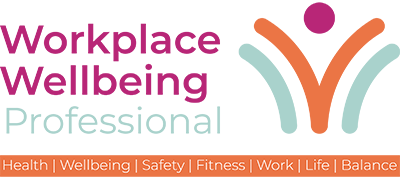Burnout has become a defining workplace challenge. As leaders chase ambitious growth targets, technological advancements accelerate, and the current uncertain global economic climate, many organisations find themselves stretching their teams to the limit.
But there’s a problem, we’re reaching a tipping point. Exhaustion is rising, engagement is falling, and the notion that high performance must come at the cost of wellbeing is proving dangerously outdated.
As the founder of WorkL, a platform I created in 2017 dedicated to improving workplace happiness and performance, I’ve seen the clear correlation between employee wellbeing and business success. The truth is that thriving teams build thriving businesses. The question is not whether we should prioritise mental health and balance, but how we can do so without compromising results.
The Productivity Illusion
For decades, we’ve measured productivity by inputs- hours worked, emails sent, meetings attended. But time and again, research shows that longer hours don’t equate to better outcomes. In fact, chronic overwork leads to cognitive fatigue, poor decision-making, and higher turnover, all of which eat into productivity.
The UK consistently lags behind in productivity per hour worked compared to many European neighbours, despite often clocking in longer hours. The solution isn’t to push harder, but to work smarter. Businesses must start by recognising that sustainable performance requires a strong focus on employee wellbeing. A burned-out team may deliver in the short term, but over time, stress erodes creativity, collaboration, and loyalty.
Measuring What Matters
One of the key insights from our work at WorkL is that happy, engaged employees are significantly more productive. However, happiness at work isn’t about perks or flimsy initiatives. It’s about deeper drivers, feeling valued, having purpose, and trusting leadership.
We developed the WorkL Happy at Work Test to help individuals and organisations understand the true drivers of satisfaction and engagement. The six key steps we measure, including reward and recognition, empowerment, wellbeing, Job Satisfaction, Purpose and information sharing, offer a roadmap for businesses to create a happy team.
Leadership and Empathy
The pandemic accelerated a shift in leadership styles. Where once command ruled, today’s most successful leaders are listeners and coaches. The businesses that navigated the crisis most effectively were those led by individuals who understood the emotional needs of their teams and responded with flexibility, compassion, and transparency.
Empathy is not a soft skill; it’s a strategic one. Leaders must now create cultures of psychological safety, where employees feel free to express concerns, take creative risks, and ask for help without fear of judgment.
Open communication, regular feedback, and visible support for mental health are essential. Too often, stress and burnout are seen as individual failures, rather than organisational symptoms. Leaders must model balance and vulnerability themselves, signalling that wellbeing is not a luxury, but a priority.
Rethinking the Workplace
Hybrid working is here to stay, but its success depends on trust and intentional design. When teams are working remotely, over-communication and unclear boundaries can lead to digital fatigue and a sense of always being “on.
Businesses should establish clear expectations around availability, meetings, and workload and allow individuals the autonomy to manage their time. Flexibility shouldn’t mean working more, it should mean working better.
At the same time, the workplace, physical or virtual, must be a source of connection and energy. Investing in meaningful collaboration, recognition, and regular wellbeing check-ins can help prevent isolation and forge a sense of belonging.
Training Managers to Spot the Signs of Burnout
Middle managers are often the pressure valve of an organisation, squeezed from both sides. They play a vital role in translating vision into action, yet often lack the training to support wellbeing for their teams.
Businesses must invest in equipping managers to spot the early signs of burnout, changes in behaviour, drops in performance, withdrawal, and to have sensitive, supportive conversations. Encouraging proactive workload management, regular one-to-ones, and goal clarity can make all the difference.
The Power of Purpose
Beyond the day-to-day pressures, one of the most protective factors against burnout is purpose- one of my Six Steps to Workplace Happiness. When individuals feel their work matters, that they’re contributing to something bigger than themselves, they are more resilient, motivated, and connected. Businesses should communicate their mission clearly and link each role, however small, to that broader impact. Purpose is a powerful antidote to cynicism and fatigue. It grounds people in meaning, and meaning sustains motivation far longer than pressure or fear.
My Six Steps to Workplace Happiness outlines the key areas that and employers need to focus on, to create a positive employee experience;
- Reward and Recognition – Every member of an organisation should benefit from its success. A fair salary is essential—no amount of praise can compensate for underpayment. Your compensation structure should meet expectations and motivate employees to go above and beyond.
- Information Sharing – Withholding information can make employees feel undervalued and disconnected from the business. For a team to perform at its best, transparency is essential. Employees at all levels should have a clear understanding of the business, its strategy, performance, customers, and competitors.
- Empowerment – Empowering employees means involving them in decision-making, valuing their ideas, and integrating their feedback into the company’s strategies. Everyone brings unique experiences and perspectives to the table, and only by considering all views can a team achieve the best possible outcome. While individuals may not be perfect, together, the team can be.
- Wellbeing – Employee wellbeing encompasses physical, emotional, and financial health. Addressing all three areas leads to improved engagement and productivity. A positive workplace culture can reduce absenteeism, as engaged employees tend to be healthier and more committed.
- Instilling Pride – Employees who take pride in their work and workplace naturally become advocates, sharing their positive experiences with colleagues, potential hires, customers, and the community. Their pride will be evident when they talk about where they work. Building this sense of pride goes beyond motivational talks or performance reviews—it’s about cultivating an environment where employees truly enjoy and take pride in their roles.
- Job Satisfaction– A range of factors influence job satisfaction, but two stand out; opportunities for personal growth and the quality of the employee-manager relationship. Employees are an organisation’s greatest asset, and high engagement is essential for success. Research shows that respectful treatment and trust between employees and leadership are key drivers of satisfaction. Poor relationships with managers are often the top reason employees leave, regardless of the company’s brand strength.
Final Thoughts
Creating a stress-free, high-performance culture isn’t just morally right, it’s a competitive advantage. In a world where top talent can work from anywhere, culture becomes your calling card. The best people don’t want burnout disguised as ambition, they want growth, balance, and impact.
Looking ahead, we’ll see that businesses that succeed are those that prioritise people. That means designing systems that support mental health, valuing long-term wellbeing over short-term wins, and redefining success in more human terms.
At WorkL, we believe happiness is not the enemy of performance — it’s the engine of it.

Lord Mark Price is the founder of WorkL and WorkL for Business, and author of Happy Economics: Why The Happiest Workplaces Are The Most Successful (published by Kogan Page).


